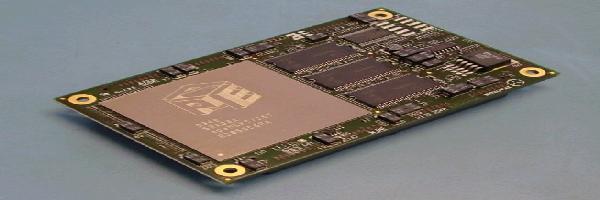This group aims at developing and using different kinds of mathematical theories and methods (algebra, homologic algebra, differential geometry, topology, non-commutative geometry, functional analysis, partial differential equations...) related to physics problems : field theory, constructive theory, quatum Hall effect, condensed matter, Schödinger equation, semi-linear equations of evolution, spectral theory, scattering theory...
Non-commutative geometry
Non-commutative geometry stems from quantum mechanics, where observables constitute a non-commutative algebra. In non-commutative differential geometry, the algebras of differentiable fonctions on manifolds are replaced by non-commutative algebras interpreted as algebras of differentiable fonctions on "non-commutative manifolds".
The group of mathematical physics is among the fundators of non-commutative geometry. In this new geometry, gauge fields and metrics can be defined on a "non-commutative space". Some of these gauge theories can be interpreted as ordinary gauge theories with Higgs fields.
The group studies these geometries, enriches them with new structures and applies this new tools to fundamental physics for a quantum theory of space-time (gravitation, gauge theory).
Homologic algebras
With the BRS methods, the homologic algrebra is among the mathematical theories frequently used in theoretical physics. The LPT has contributed to determining the local BRS cohomology of gauge theories and the homologic description of constrained dynamical systems.
The N-complex theory (differentials with d^N=0) and the corresponding generalisation of the homology have been developed. Examples of such N-complexes arise in connection with high-spin gauge theories, such as
the N-complexes of tensorial fields with mixed Young symmetries (arrays with N-1 columns). Another class consists in N-complexes associated canonically to the homogenous algebras, which are toy models for non-commutative algebric geometry.
Conformal theories
The exact mathematica formulation and the first results on the classification of conformal theories are at the heart of current developments in the field theory of punctual or extended objects. The LPT group works on selection rules derived from the Galois theory, in order to simplify and probably generalise some classifications.
Quantum Hall effect and bidimensional systems
The quantum Hall effect is an active field of strongly correlated systems. The research at LPT is articulated along the Landau-Ginzburg approach to undersantd the global properties of Hall systems (phase transition) and the "topological approach" where the observed stability of the Hall plateaus is considered as due to topology.
The LPT group has exhibited a modular symetry arising at low energy in the Landau-Ginzburg description, which allowed them to understand and reproduce the main experimental observations (global phase diagram, hierarchical structures). This structure can be adapted easily to cold atoms in rapidly rotating traps when the "Hall regime" is reached.
Concerning the topological approach, the LPT group has developed a mathematical framework well suited for the rigourous study of idealised Hall systems close to experimental conditions (finite size of the sample, external couplings...). The properties of the non-commutative torus were essential and underline the importance of modern concepts of "non-commutative topology", where the C*-algebras abd the K-theory are essential.
Constructive theory
The group has proceeded in several directions : condensed matter, disordered systmes and matrix models, combinatorics and Jacobian conjecture, and more recently, non-commutative field theoires on "Moyal spaces", scalar theories and Yang-Mills theories. The properties ensuring the renormalisability of a class of scalar non-commutative theories have been clarified. The same tools are being adapted to non-commutative Yang-Mills theories on Moyal spaces.
In condensed matter, the objective consisting in deciding on the controversy of the nature of correlated fermions in two dimensions using the Salmhofer criterion above the critical temperature was reached in 2004.
For disordered systems, the group has studied the density of states in a matrix model close to the Anderson model for an electron in a random potential, using the conservation of momenta at two dimensions. The Jacobian conjecture (the inverse of a polynomial transform at n variables with a Jacobian equal to unity is a polynomial) was studied as a probelm in field theory at finite dimension.
Non-linear partial differential equations
Research was performed on mathematical problems linked to
non-linear (rather semi-linear) equations of physical interest : non-linear Schrödinger and Klein-Gordon equations, Hartree equations, coupled equations like the Zacharov and the Maxwell-Schrödinger systems. The problems considered were essentially Cauchy’s problem, local or gloabl in time, and the scattering problem, i.e., the existence of wave operators and the asympotic completeness (in the few cases where it is accessible). After works on the non-linear Schödinger equations in any dimension and with a general form of interactions, the current research is focused on the long-range scattering and the construction of modified wave operators for the Maxwell-Schrödinger system, which describes a charged quantum particle inetracting with its own electromagnetic field.
Schrödinger operator and solvable potentials
The Schrödinger operator has been studied both for direct problems (phase shifst, discrete spectrum) and for inverse problems for many years (collaboration with CERN, Rockefeller, Japan). For the discrete spectrum, one can ciste : a complete study at 1-D and 2-D with or without spherical symmetry, universality for 2-D low-energy phase shift, an exclusion theorem of bound states at positive energy for non-local potential, and two recent articles on two infinite classes of potentials where the Schrödinger equation can be solved at vanishing energy, but for all angular momenta.



